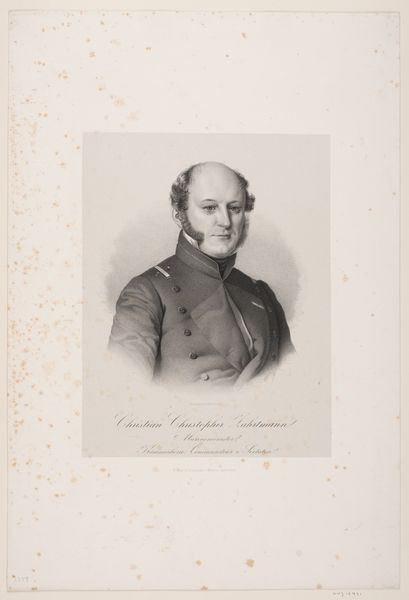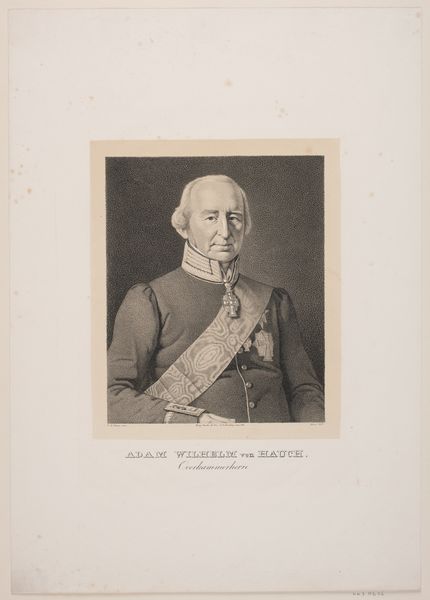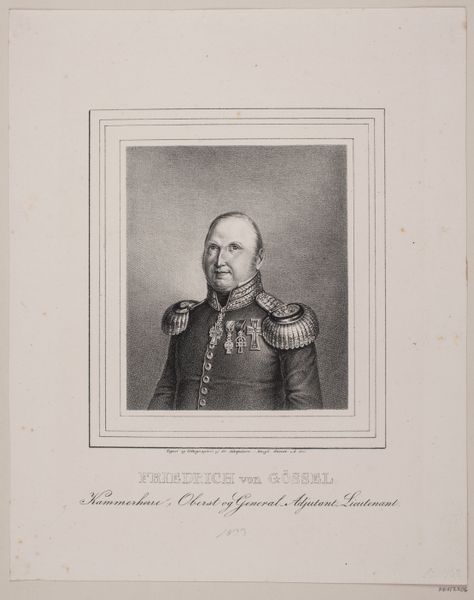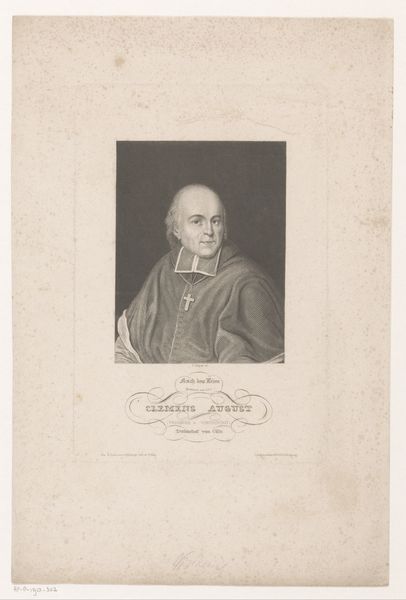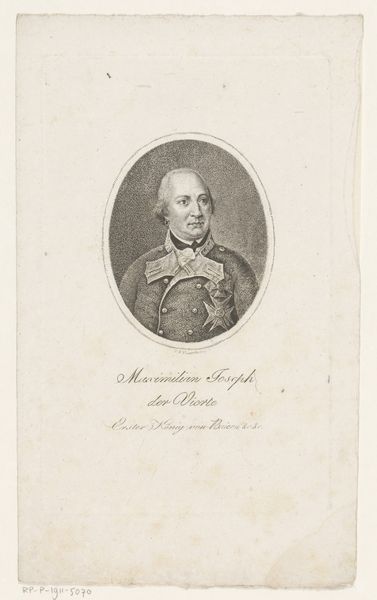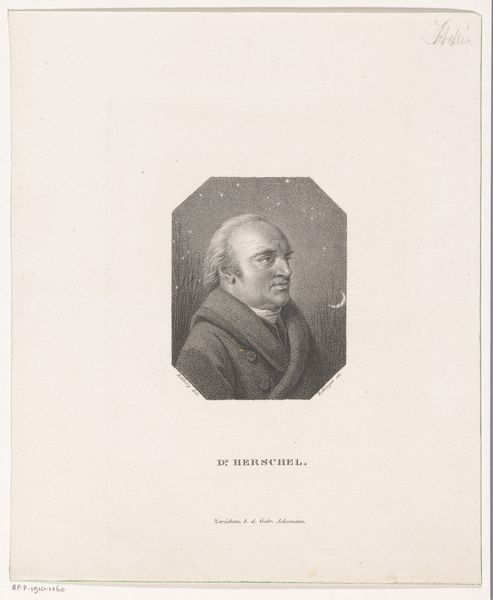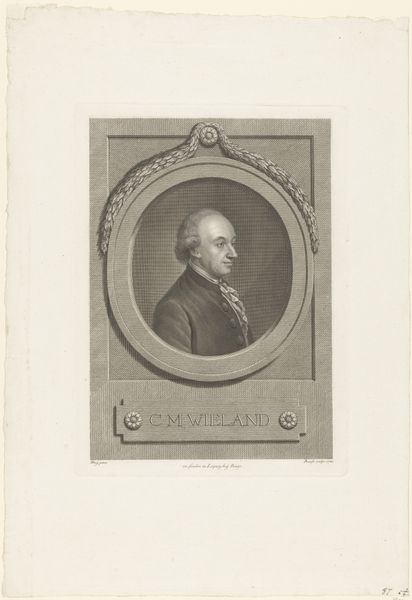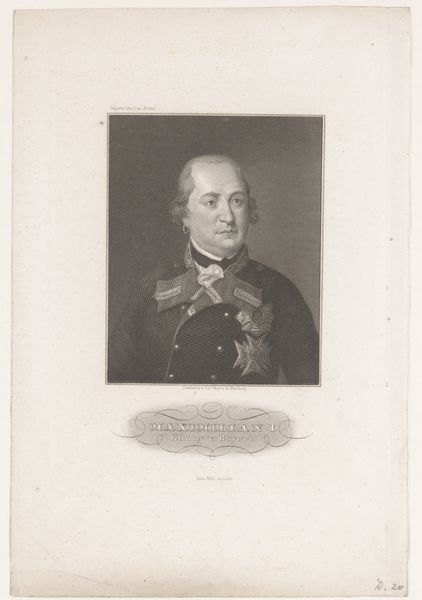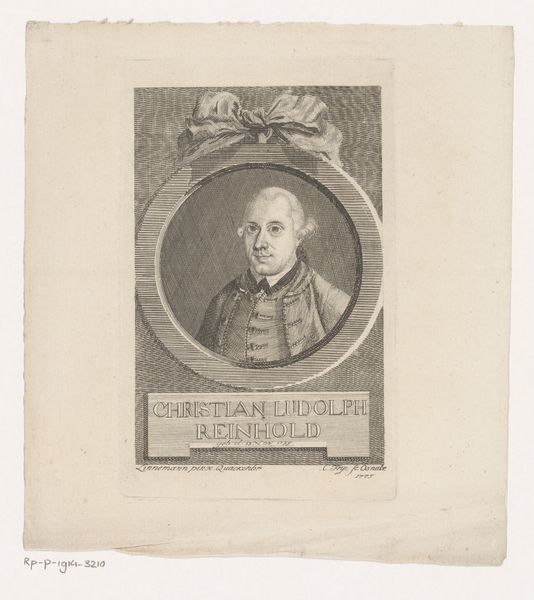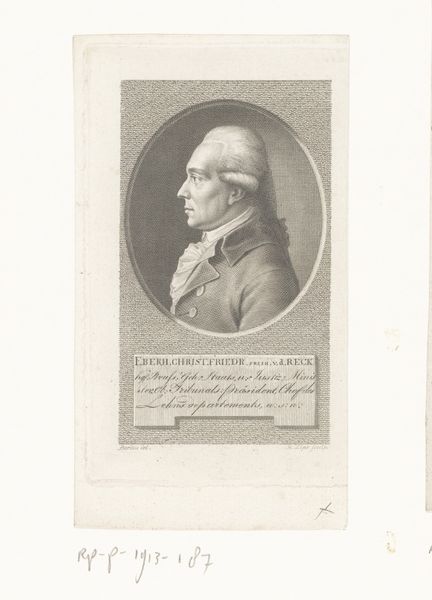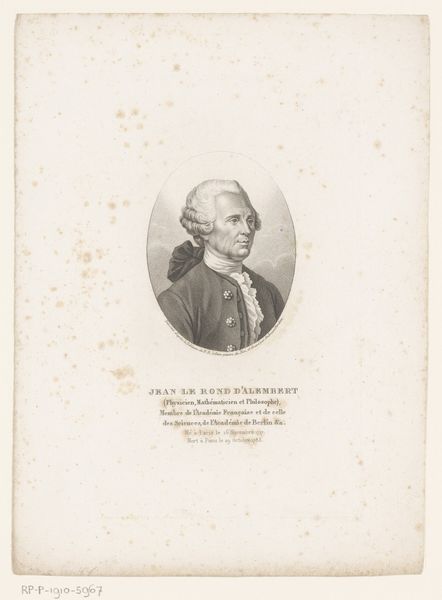
#
portrait
# print
#
romanticism
#
realism
Dimensions: height 560 mm, width 441 mm
Copyright: Rijks Museum: Open Domain
Curator: This somber portrait print from between 1820 and 1836 depicts Heinrich Ernst von Reichenbach Goschütz. What is your initial take on this image? Editor: It’s stark, almost severe. The grayscale palette emphasizes the subject's rigid posture and serious gaze. He’s holding a rifle, which lends the piece a sense of formality, but there’s something about the setting that gives it an atmosphere of isolation. Curator: Indeed. The historical context suggests a society grappling with shifts in power and identity. Consider how Romanticism influenced artistic depictions of masculinity during this period—the subject seems both authoritative and subtly vulnerable. The rifle isn't just a weapon; it's a symbol of aristocratic power intrinsically linked to the landscape, hinting at colonial undercurrents within resource control. Editor: And it all boils down to the means of representation, too, doesn't it? It is, after all, a print. What strikes me is the texture and production involved here. Think about the engraver's hand, meticulously translating flesh and fabric through labor-intensive carving and etching. The very act of making multiples inherently shifts how the subject, Goschütz, might have been originally viewed as a figure of individual authority. Instead, this becomes a reproducible commodity. Curator: Absolutely, which in itself disrupts singular narratives around representation. This "commodity" then becomes accessible across various social strata, reshaping ideas of aristocracy and power through broader consumption. Consider how printmaking techniques democratized imagery, intersecting with political dialogues of the time. Who had access, and how did it reinforce or subvert class structures? Editor: I'd add, how do the print medium and image labor in tandem to convey complex ideological information about social, political, and gender issues? Here, in a way, the artwork underscores that the materiality is always integral to interpretation. Curator: Precisely, which speaks volumes about the subject's societal role and the artist’s positioning within those hierarchies. It prompts questions around who is allowed to wield influence, both literally with a weapon and figuratively with artistic agency. Editor: It's interesting to consider how the image shifts the historical figure, who once yielded power, to the position of art object that is actively subject to, and shaped by, different aesthetic and societal readings. Curator: The interplay between context and material, indeed, allows a much deeper understanding of these entangled histories.
Comments
No comments
Be the first to comment and join the conversation on the ultimate creative platform.

